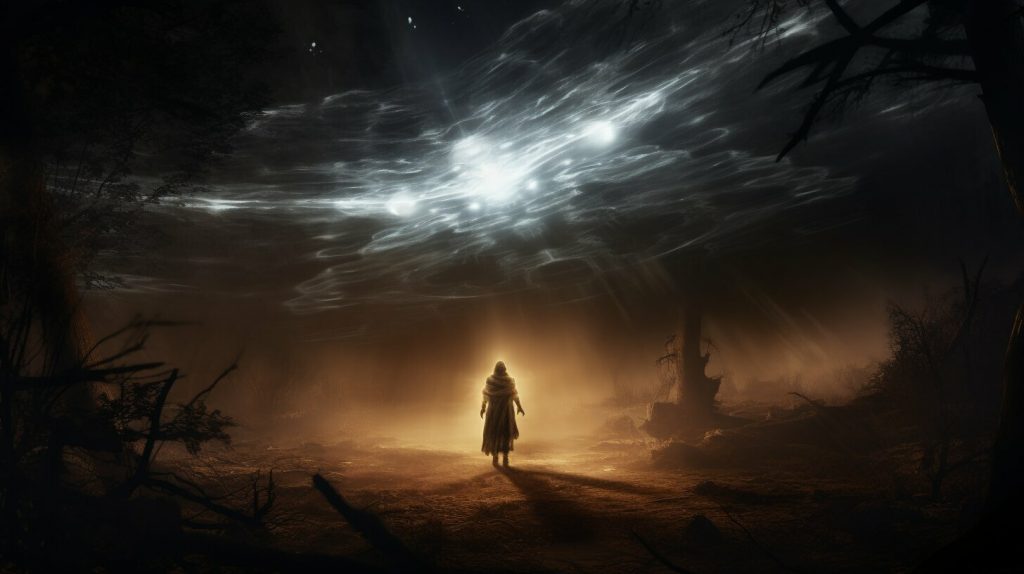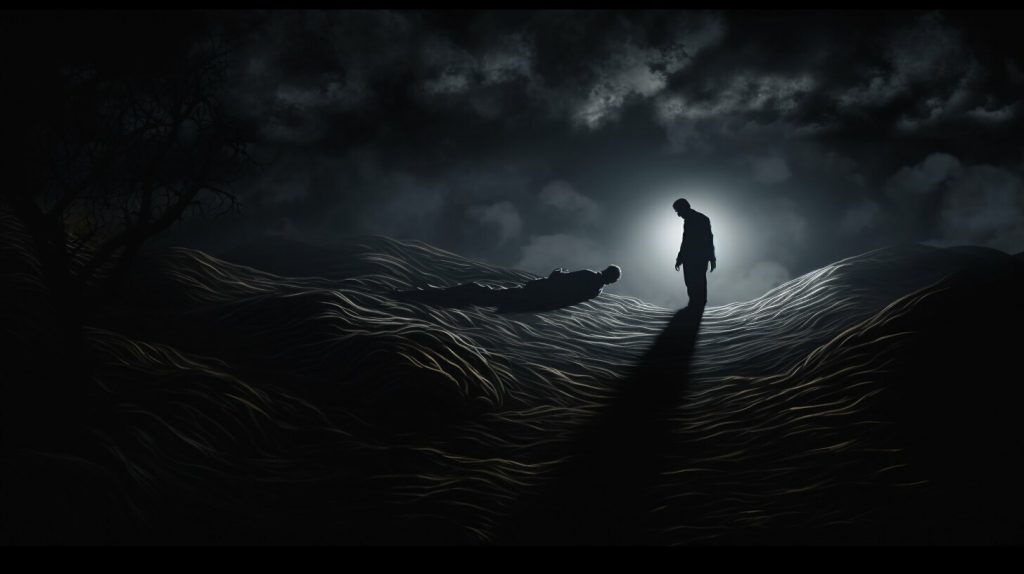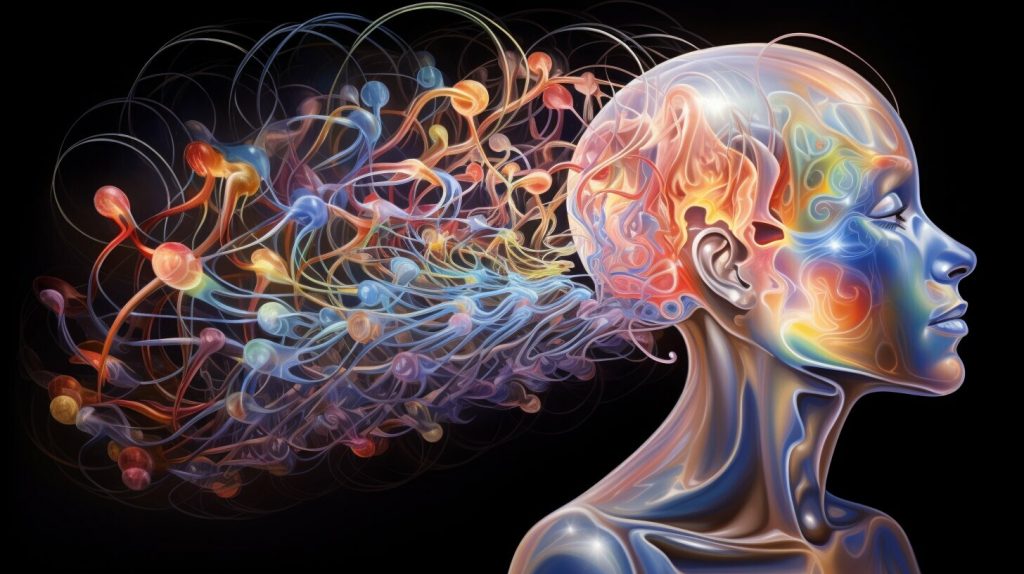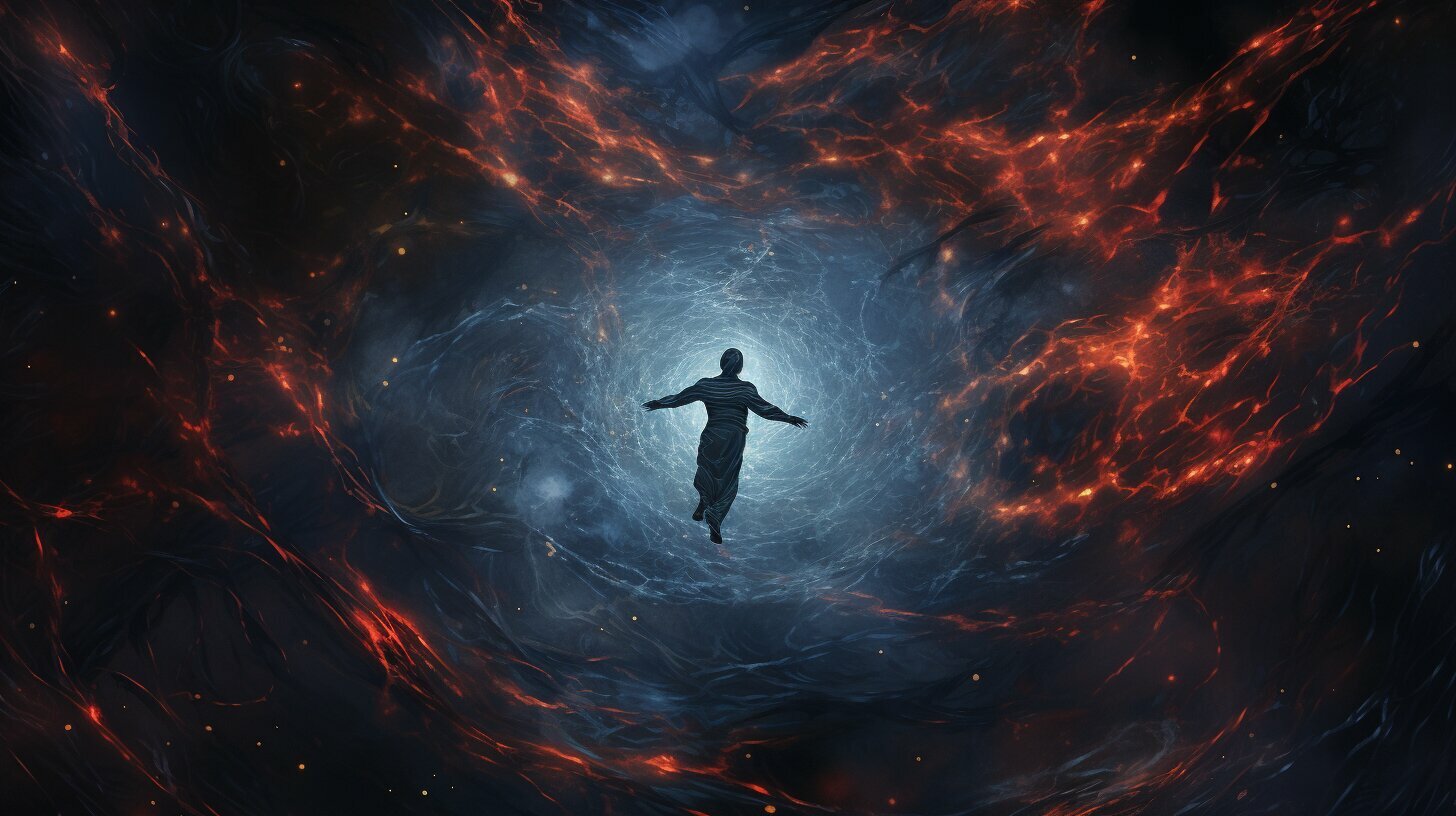Astral projection, also known as out-of-body experiences (OBEs), has fascinated many throughout history, but it is essential to understand the possible dangers and hazards involved. This phenomenon involves the separation of the mind from the physical body, allowing individuals to explore realms beyond our normal world. While some claim to have had profound experiences during astral projection, it is important to approach it with caution and skepticism.
Key Takeaways:
- Astral projection involves separating the mind from the physical body to explore realms beyond our normal world.
- There is no scientific evidence to support the existence of astral projection.
- Neurological conditions, vestibular disorders, and dissociative disorders may contribute to the occurrence of out-of-body experiences.
- Approach astral projection with caution and skepticism, understanding the potential hazards and risks involved.
- It is important to practice safety measures and take necessary precautions during astral journeys.
Understanding Astral Projection and its Safety Concerns
Before embarking on an astral journey, it is crucial to understand the potential safety concerns and negative effects that can arise from this spiritual practice. Astral projection, also known as out-of-body experiences (OBEs), is the process of separating the mind from the physical body and traveling to realms outside of our normal world. It has a long history and has been practiced by various societies and belief systems.
While many people claim to have had OBEs, there is no scientific evidence to support the existence of astral projection. This lack of empirical data raises safety concerns and highlights the importance of approaching astral projection with caution and skepticism. It is essential to remember that what may seem like a harmless journey into the unknown can have adverse effects on one’s mental and emotional well-being.
Understanding Negative Effects and Precautions
During astral projection, individuals may encounter negative effects such as disorientation, anxiety, and fear. The very act of separating the mind from the body can be unsettling for some, leading to psychological distress. It is essential to be aware of these potential negative effects and take appropriate precautions beforehand.
“The mind is a powerful tool, and astral projection can be a profound experience. However, it is crucial to remember that not all experiences will be positive or transformative. It is recommended to practice astral projection under the guidance of an experienced practitioner or spiritual teacher. They can provide valuable insights, techniques, and support to ensure a safer and more beneficial astral journey.”
Before attempting astral projection, individuals should consider their mental and emotional state. If you are feeling particularly stressed or anxious, it may be wise to postpone the practice until you are in a more relaxed and stable mindset. Additionally, creating a safe and sacred space for your astral journey, practicing grounding techniques, and setting clear intentions can help alleviate potential negative effects and enhance the overall experience.
While the allure of astral projection may be enticing, it is vital to approach this practice with a balance of curiosity and mindfulness. By understanding the possible safety concerns and negative effects, and taking appropriate precautions, individuals can make their astral journeys safer, more enjoyable, and spiritually enriching.

Potential Hazards of Astral Projection
While astral projection can be an enlightening experience, there are potential hazards and dangers that individuals should be aware of and take precautions against. It is important to approach astral travel with a grounded mindset and a clear understanding of the potential risks involved.
One of the main pitfalls of astral projection is encountering negative entities or energies in the astral realm. Just as there are positive and benevolent beings, there are also negative entities that can cause harm or disturb the astral traveler. It is crucial to protect oneself energetically before embarking on an astral journey to minimize the chances of encountering these harmful entities.
Another potential danger of astral projection is getting disoriented in unfamiliar realms. When you project your consciousness outside of your physical body, you may find yourself in unfamiliar environments that can be disorienting or even frightening. It is important to have a solid understanding of grounding techniques and visualization exercises to maintain a sense of stability and navigate these unfamiliar realms safely.
In addition to the aforementioned risks, there is also the possibility of experiencing harmful psychological or emotional effects during astral projection. Some individuals may find that their astral travels bring up unresolved traumas or deep-seated fears, which can be overwhelming. It is important to approach astral projection with self-awareness and emotional stability, seeking professional support if needed.

Scientific Perspectives and Skepticism Surrounding Astral Projection
Although many individuals claim to have had astral projection experiences, the scientific community remains skeptical due to the lack of empirical evidence supporting the phenomenon. Astral projection, also known as out-of-body experiences (OBEs), refers to the process of separating the mind from the physical body and exploring realms beyond our normal world. It has a long history and is practiced by various societies and belief systems.
While astral projection can be a profound and transformative experience for those who believe in it, the scientific perspective offers alternative explanations for these occurrences. Skeptics assert that OBEs could be attributed to various factors such as sleep paralysis, lucid dreaming, or hallucinations induced by altered states of consciousness.
Without concrete scientific evidence and the ability to reproduce and measure the phenomenon consistently, astral projection remains a topic that is contested within scientific circles.
Neurological conditions, such as epilepsy, vestibular disorders, and dissociative disorders, may also contribute to the occurrence of OBEs. These conditions can disrupt the brain’s perception of the body’s position in space and lead to a sense of detachment or floating sensations.
The Role of Neurological Conditions and Disorders in OBEs
Individuals who have experienced OBEs due to neurological conditions often report feelings of disorientation, loss of control, and a sense of existing outside their physical body. While these experiences may align with the idea of astral projection, it’s important to differentiate between the spiritual belief and the scientific understanding of these phenomena.
Ultimately, the debate surrounding astral projection highlights the contrast between subjective experiences and objective scientific inquiry. As the scientific community continues to investigate the nature of consciousness and explore altered states of awareness, a better understanding of astral projection may emerge in the future. Until then, the topic remains a fascinating realm where personal beliefs and scientific skepticism converge.

The Role of Neurological Conditions and Disorders in OBEs
Understanding the role of neurological conditions and disorders can provide insights into the occurrence and nature of out-of-body experiences like astral projection. While the exact mechanisms behind astral projection remain a mystery, research suggests that certain neurological factors may contribute to the phenomenon.
One such factor is epilepsy, a neurological disorder characterized by recurrent seizures. It has been observed that individuals with epilepsy are more likely to report OBEs compared to the general population. This correlation suggests that abnormal electrical activity in the brain during a seizure may trigger an altered state of consciousness, potentially leading to an out-of-body experience.
Vestibular disorders, which affect the inner ear and the body’s sense of balance, have also been linked to OBEs. The vestibular system plays a crucial role in our perception of spatial orientation and movement. When this system malfunctions, it can create a sense of detachment from the physical body, mimicking the sensation of an OBE.
Dissociative disorders, such as dissociative identity disorder and depersonalization disorder, involve a disruption in the normal integration of consciousness, memory, and identity. These disorders can cause individuals to feel detached from their bodies or experience fragmented identities, which may contribute to the occurrence of OBEs.
It is important to note that the presence of these conditions does not guarantee the occurrence of astral projection. OBEs can happen to individuals without any underlying neurological conditions as well. Additionally, more research is needed to fully understand the complex relationship between neurological factors and out-of-body experiences.

Understanding the Complexities of OBEs
In conclusion, while neurological conditions and disorders can potentially influence the occurrence of out-of-body experiences like astral projection, the exact mechanisms behind these phenomena continue to elude scientific understanding. It is important to approach the topic with an open mind and consider multiple perspectives, including both scientific and anecdotal evidence.
Astral Projection Safety Tips
To ensure a safer and more fulfilling spiritual journey, it is important to follow certain safety tips when engaging in astral projection. While there is no scientific evidence to support the existence of astral projection, many individuals claim to have had out-of-body experiences (OBEs) and find value in exploring this phenomenon. Here are some key tips to consider:
1. Prepare Yourself Mentally and Emotionally
Before attempting astral projection, take the time to prepare yourself mentally and emotionally. This can involve practicing meditation, deep breathing exercises, or mindfulness techniques. By cultivating a calm and focused state of mind, you can enhance your chances of having a positive and controlled astral experience.
2. Create a Safe and Sacred Space
When engaging in astral projection, it is crucial to create a safe and sacred space in which to conduct your practice. This can be a dedicated room, a quiet corner of your home, or even an outdoor setting that resonates with you. Ensure that the space is free from distractions and clutter, and consider incorporating elements such as candles, crystals, or calming music to enhance the ambiance.
3. Set Clear Intentions and Visualize Protection
Before embarking on your astral journey, set clear intentions for what you hope to achieve and visualize yourself being protected throughout the experience. This can involve envisioning a shield of white light surrounding your astral body or calling upon spiritual guides for assistance and guidance. By setting positive and protective intentions, you can create a sense of security and establish boundaries during your astral projection.
4. Practice Grounding Techniques
After completing your astral projection, it is important to practice grounding techniques to bring yourself back to the present moment. This can include activities such as eating a healthy meal, taking a warm shower, or spending time in nature. Grounding helps to integrate the astral experience into your physical reality and promotes a sense of balance and stability.
Remember, astral projection is a deeply personal and subjective experience. It is essential to approach it with an open mind, a healthy dose of skepticism, and a commitment to your own well-being. By following these safety tips, you can navigate the realm of astral projection with greater confidence and awareness.
